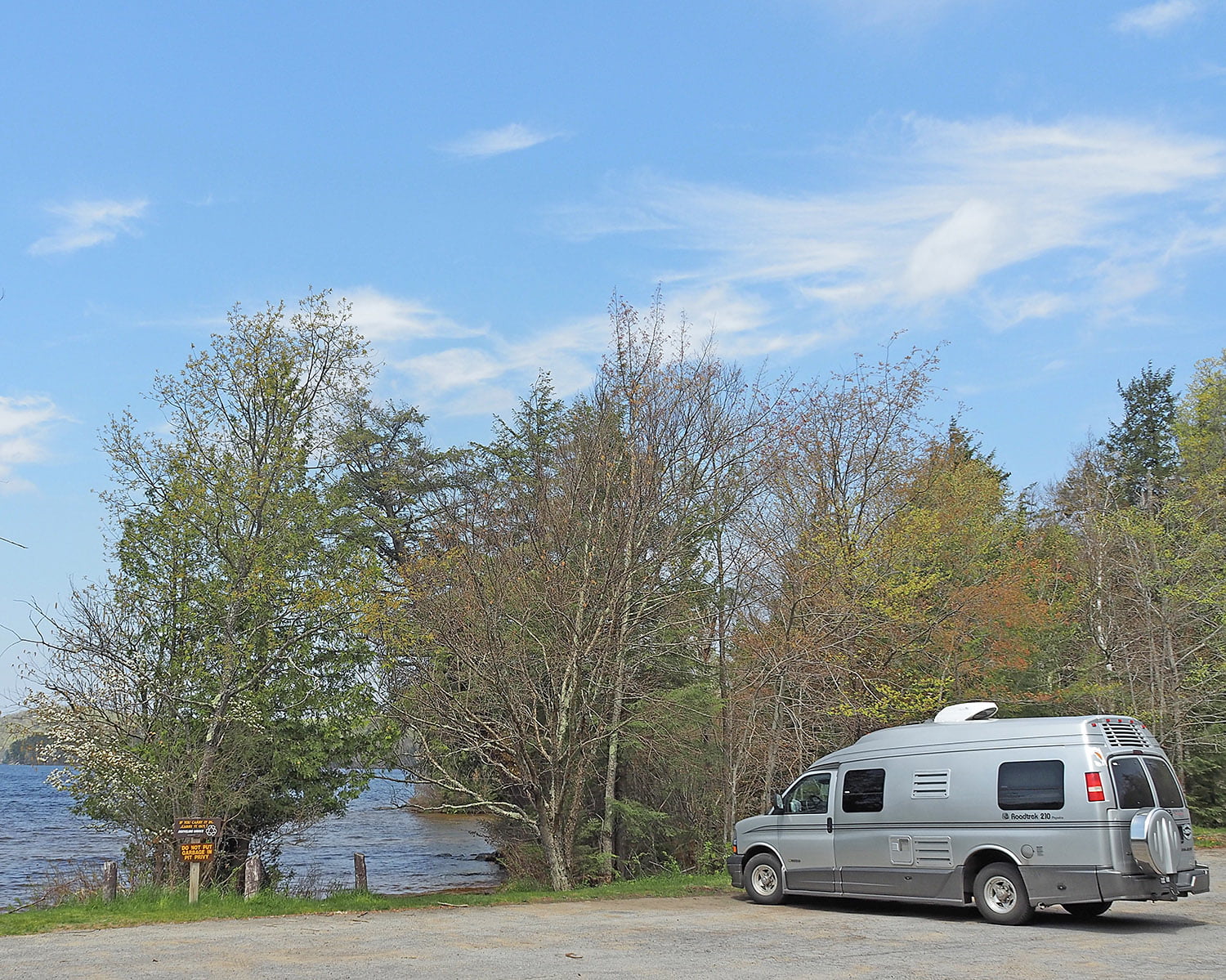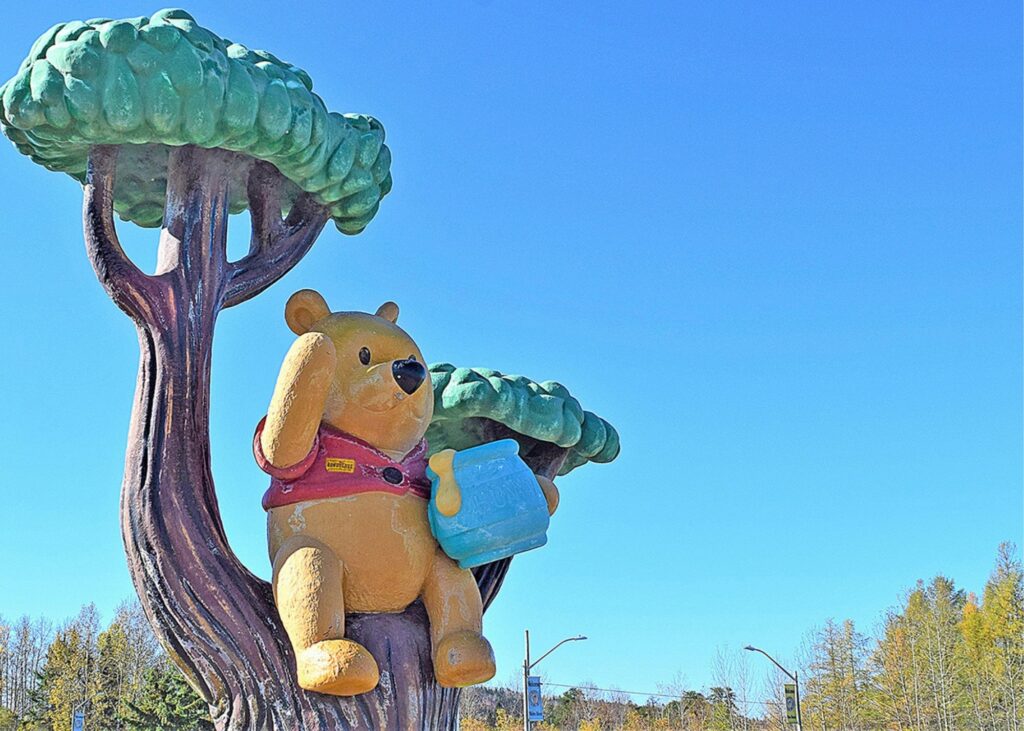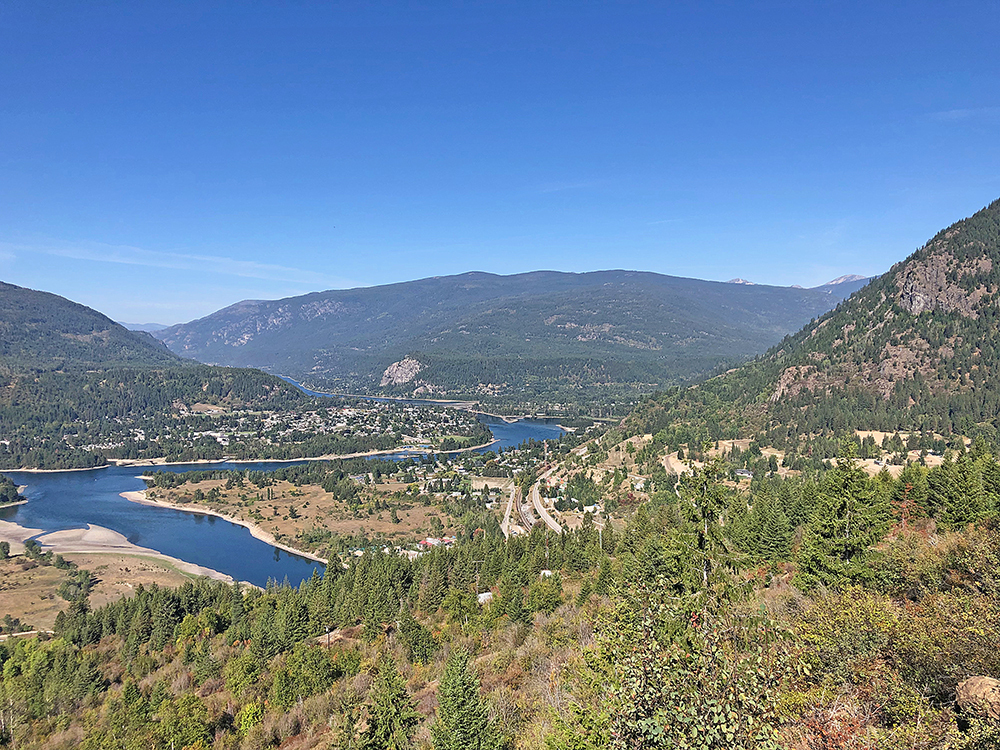In the world of RVing, the rural parts of upper New York state are like two cousins; one dressed up with all the rough edges polished off, the other a down-to-earth, jean-jacket-wearing tomboy. Of course, this makes it easy to customize a road trip, depending on your preferences at the moment. It’s something I appreciate about visiting this part of New York – it can be wineries and sophistication, or it can be the call of the loons and wilderness.
So, when the loons-and-wilderness mood strikes, we head for the “rougher” side of the state, a region bordered by I-81 to the west, I-90 to the south, Vermont to the east and the St. Lawrence River to the north. Much of this is taken up by six million acres of the Adirondacks: mountains, pine forests and pristine lakes for boating, swimming and fishing that have been officially designated “forever wild,” one of the last tracts of backcountry wilderness in the northeast United States.
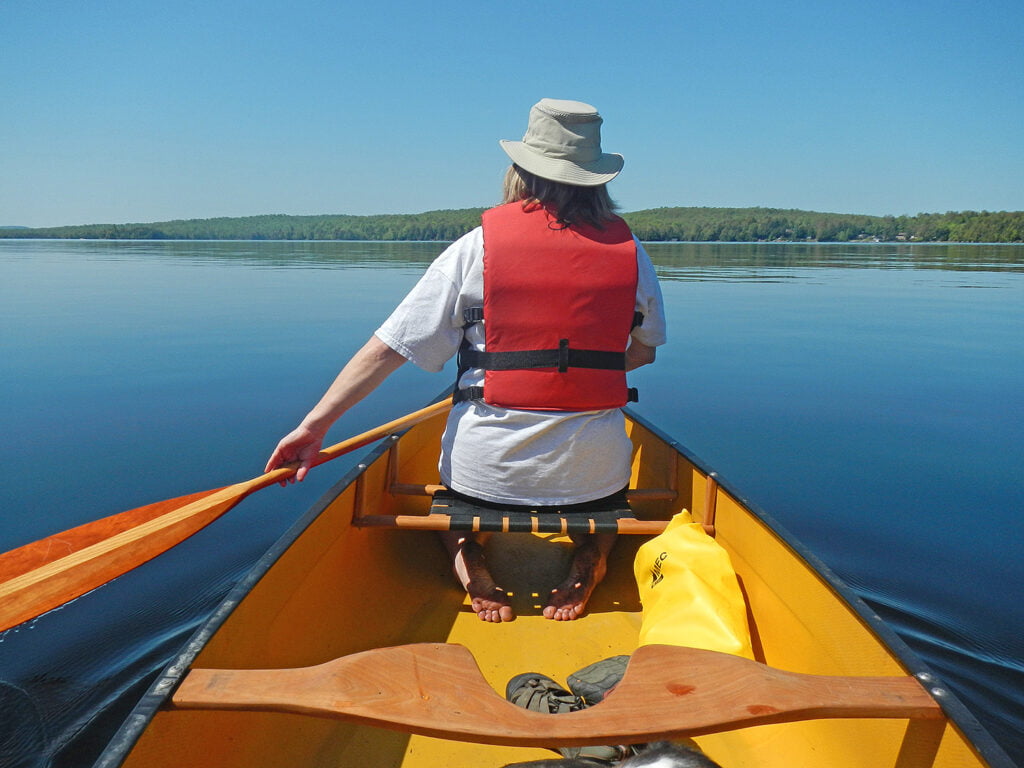
The dome-shaped mass of land that is the Adirondack Mountain Range is often described as “old rock, young mountains,” pushed up by the forces of heat and then largely shaped by the action of glaciers. Of this, almost two-thirds are private lands, so many hiking trails and paddling routes cross private property. It is important to respect both the private and public within the park: follow carry-in/carry-out practices, stay on trails and roadways, and make as light a footprint as possible.
There are villages like Lake Placid (a shopping and tourism magnet), Olympic venues and five-star resorts. But – and I’m admitting my bias – I am more of the down-to-earth, loon-appreciating tomboy. Shopping wears me out and travelling in a Class B camper van doesn’t leave much space to stuff any purchases.
The Edges of Wilderness
Another perk of visiting the heart of Adirondack Park is that the edges are peppered with small family-owned businesses, interesting local museums and excellent overnight stops at a mix of Harvest Hosts, state parks and boondocking.
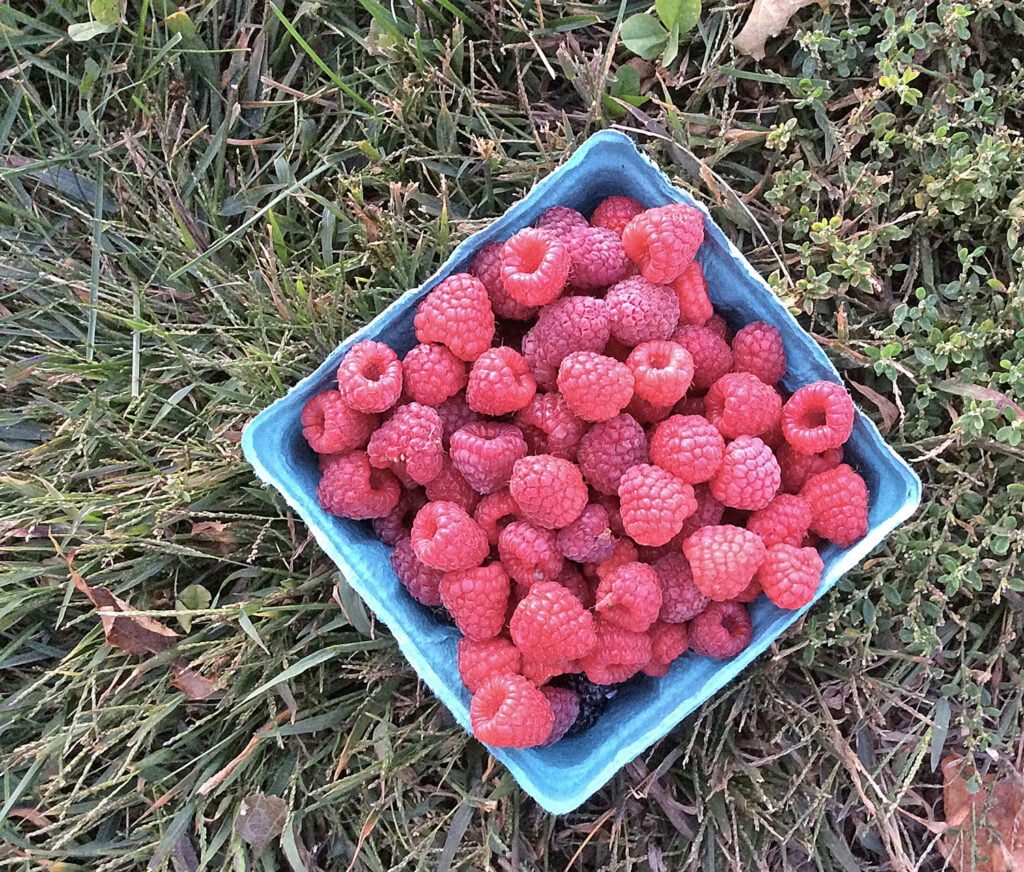
Travelling south from Ontario – crossing at the scenic Thousand Islands Bridge – we can quickly be in Lowville, a village of 3,500 right on the western edge of the region, overlooking the foothills of the Adirondack Mountains. Lowville is known as the home of Philadelphia Cream Cheese and the host of the annual September Cream Cheese Festival (which shows off a gigantic cheesecake). There are small cheese shops – including the Lowville Producers Cheese Store, owned by 165 local dairy families, where we load up our van fridge with flavours like applewood smoked cheddar, asiago and cheese spreads in a dozen different varieties.
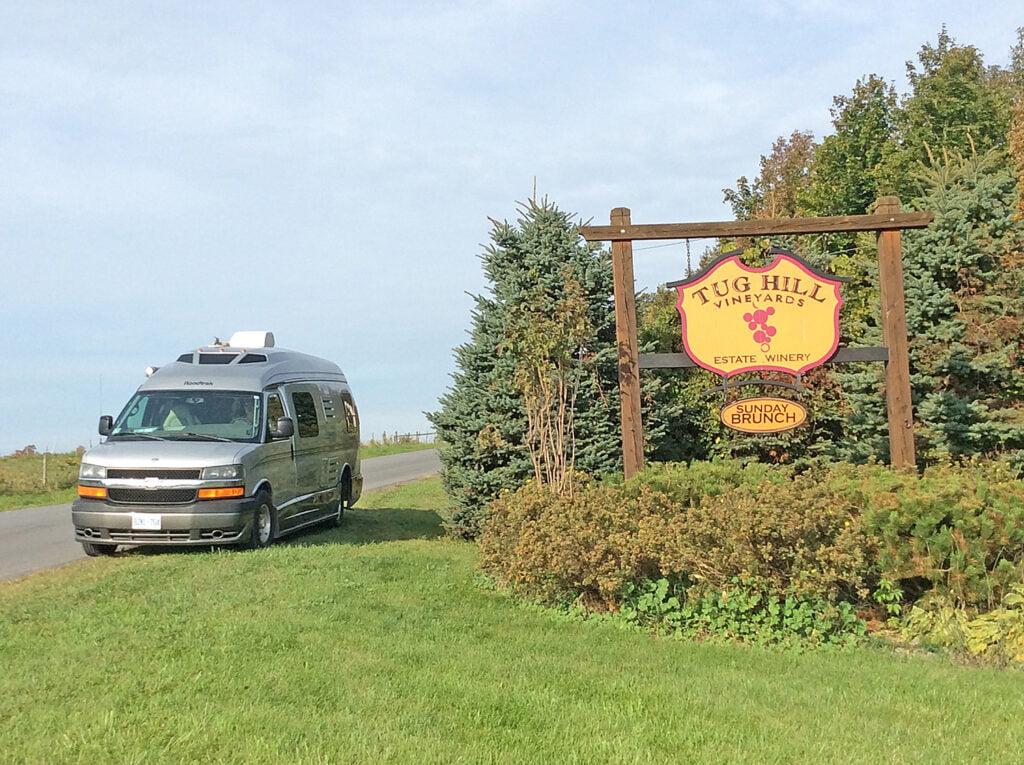
Lowville sits at the Tug Hill Plateau, separated from the Adirondacks by the Black River Valley. In addition to expansive views over the river plain – a great spot to catch our breath and slice a little cheese on bagels – it’s home to Tug Hill Vineyards, a beautiful Harvest Hosts location with pick-your-own berries, wines and products like the delicious Blueberry Liqueur, created from estate-grown blueberries and flavoured with their own blueberry wine. It’s well worth the stop, whether just passing through to taste, pick some berries, or to stay the night.

Into the Woods
From Lowville, it’s a coin toss between two excellent choices: we can skirt along the top of the park on State Route 3, stopping to enjoy excellent camping at Cranberry Lake Campground (one of our favourites) or dive right into the park’s interior by taking the remote roadway between Lowville and Eagle Bay, with a stop to boondock in the quiet at the Stillwater Reservoir.
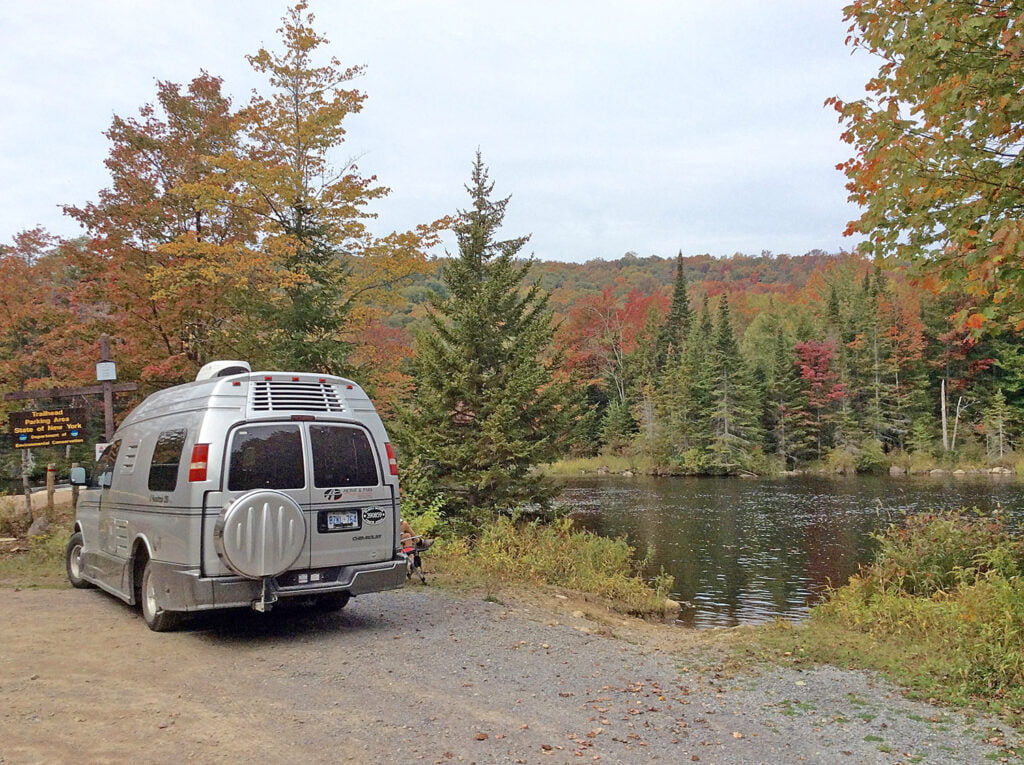
If heads, we head for Cranberry Lake, a state park in one of the largest remote areas remaining in New York. The campground sites are spacious, well wooded and private, although RVers should be prepared for a “more rugged” experience, as there are no electrical or water hook-ups. The park does have a comfort station with showers as well as a sanitary dump station. Many sites are right beside the water (and the loon calls). The remote beauty of the park, the excellent hiking trails and unspoiled paddling draw us back to this park year after year. Another bonus is that the May long weekend falls a week before the U.S. long weekend, so Cranberry Lake is often close to empty when Ontario parks are full to bursting.
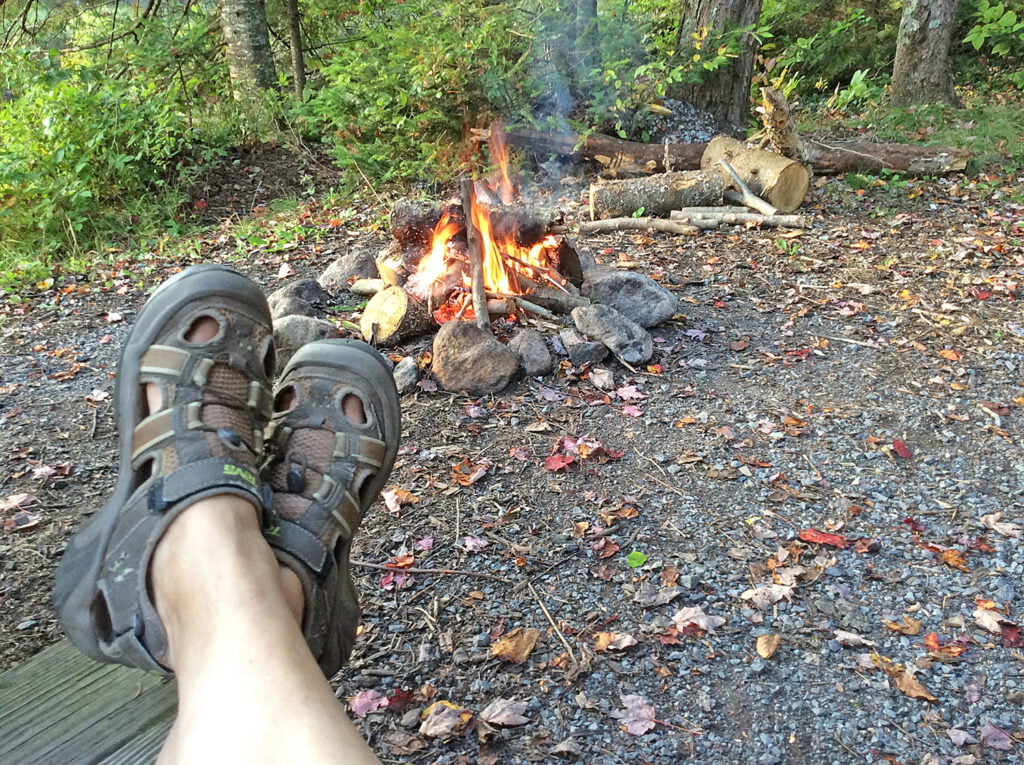
If the coin flips tails, we dive right into the park interior along County Road 26 (a.k.a. Number Four Road) until turning east onto the Stillwater Road. It’s almost an hour along a very remote, twisty rural road through thick woods until rolling into the beautiful Stillwater Reservoir. The reservoir is popular for remote wilderness camping along the shorelines (not RV suitable), canoeing, boating and fishing. There’s a ranger station, boat launch and small store near the water’s edge, but overnight camping is not allowed. Locals pointed us to a peaceful boondocking site near a trailhead at the Raven Lake Primitive Campsite, a drive-to campsite with a fire ring and picnic table located on the Beaver River, which feeds the reservoir. This site is part of the state’s Department of Environmental Conservation lands. The hikes are well marked and the site was the perfect spot to mark the day’s end with a campfire on the riverbank.
Around Lake Placid
For many, Lake Placid is a place to restock the RV, pick up a few souvenirs and stroll along paved sidewalks. It’s the gateway to fascinating stops like the Lake Placid Olympic Sites where visitors can speed down the bobsled, luge and skeleton track or ride the gondola up to the ski jumping complex. It’s also close to a museum of history at the John Brown Farm State Historic Site, the homestead of one of America’s most controversial abolitionist figures.
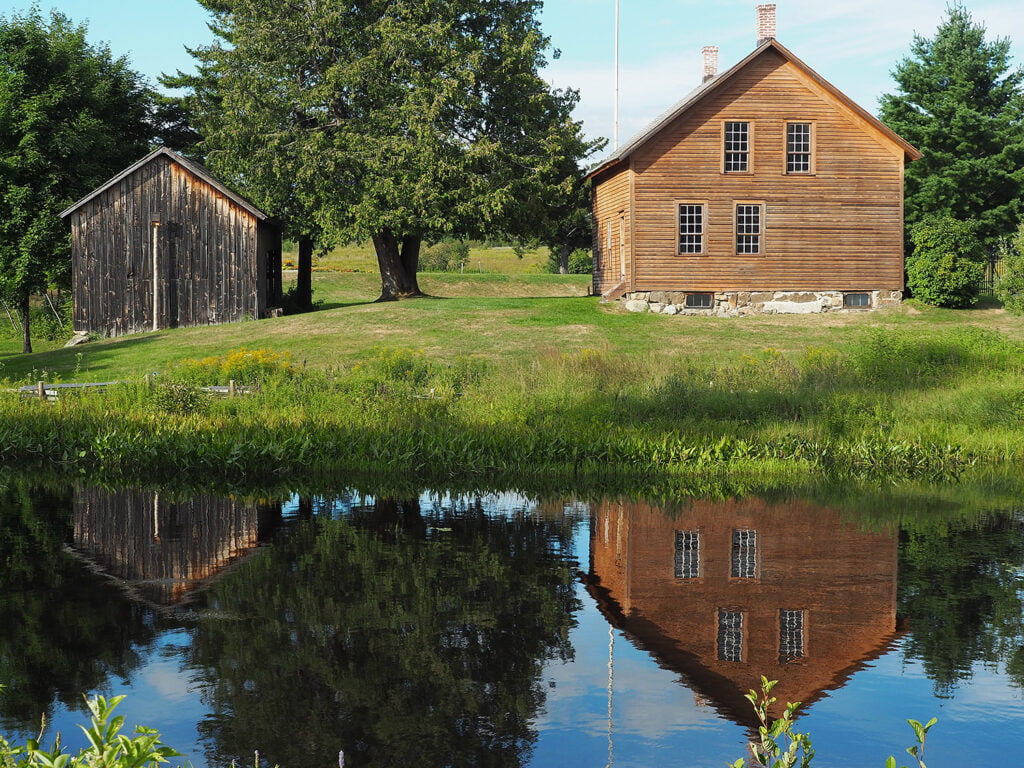
Brown’s main goal in life was to end slavery; his belief in equality was rooted in his strict Calvinist upbringing. His place in history is marked by his violent attack on a United States Arsenal at Harpers Ferry, looking to seize weapons for his campaign to liberate slaves in the South. Captured two days after the futile bloody raid, he was tried for treason and sentenced to hang. His execution brought rejoicing in the South and indignation in the North and his unwavering dedication to the cause of abolishing slavery set off a chain of events leading to the Civil War, by far the bloodiest American conflict of all time.
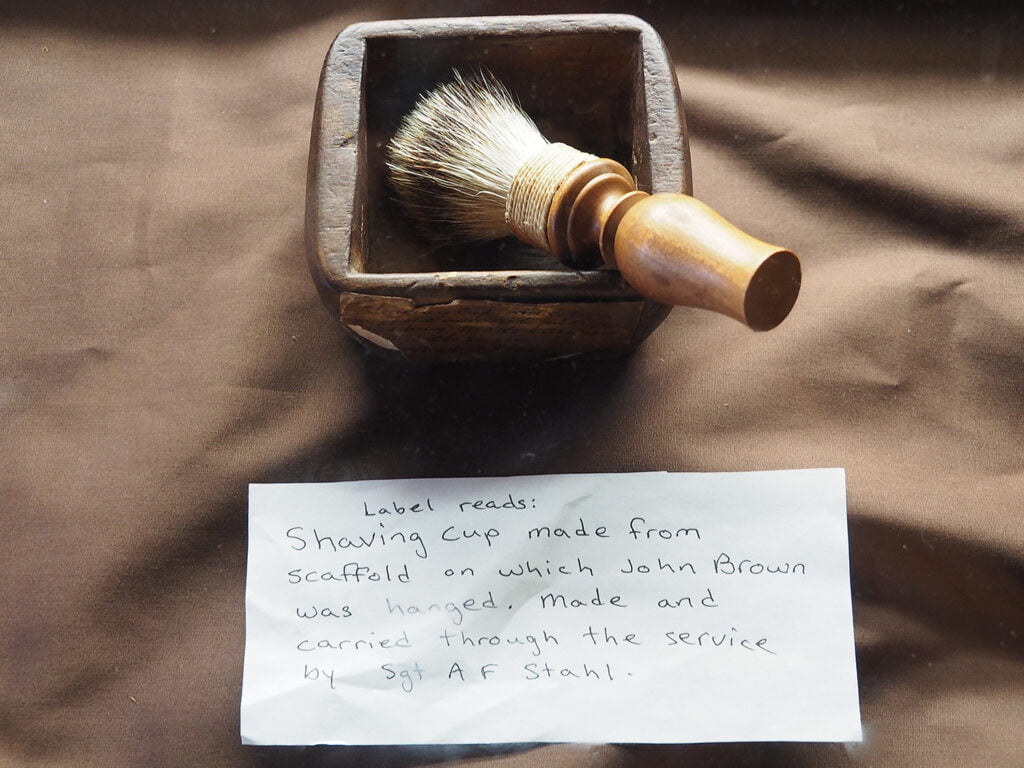
The modest, three-room Brown farmhouse is filled with artifacts like a small wooden cup carved from a piece of the scaffolding where he was hung and the 1859 funeral bill from a New York City undertaker detailing the preparation of Brown’s body and his $11 walnut coffin.
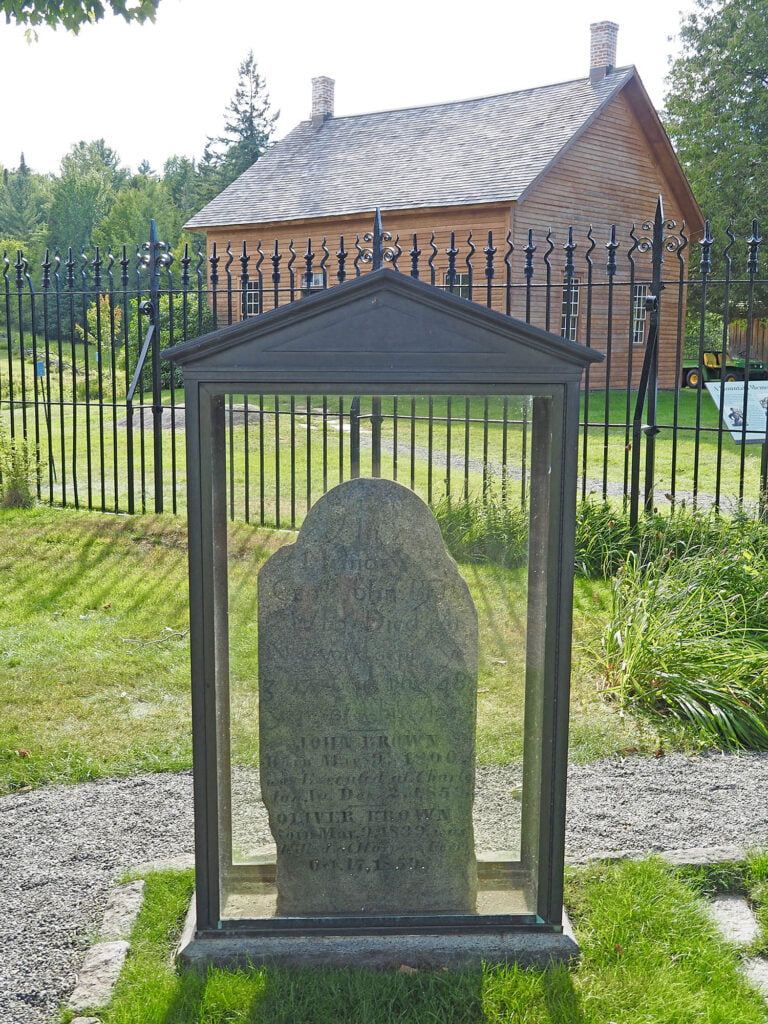
John Brown is buried beside the farmhouse, at the base of a huge, granite boulder – his Thinking Rock – in a simple grave along with his sons and members of his band from those eventful, fateful days at Harpers Ferry.
To the southeast of Lake Placid are small villages like Keene, a hub for avid hikers who relish the challenge of the High Peaks region. There are outfitters with camping supplies, sporting goods and maps galore detailing the popular trails to Mt. Marcy, Big Slide Mountain and Rooster Comb. The trails vary from leisurely to heart pounding and the staff at the outfitters will be able to help hikers make the right choice.
In the end, even the rougher side of this part of New York can be a smooth ride and an irresistible buffet of option for the more rugged of RV travellers – and sometimes, it’s as simple as tossing a coin.

